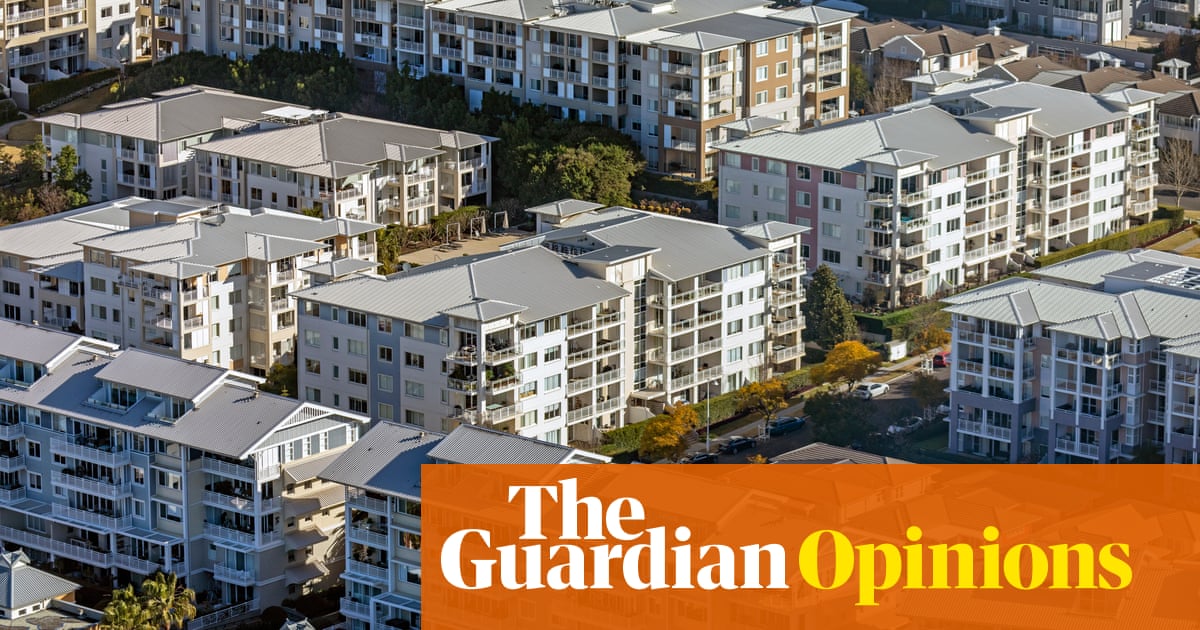
Building new units is proven to push rents down – but not for the reasons you may think | Dominic Behrens
Supply-centric arguments are commonly dismissed out of hand, yet research shows building expensive new homes results in lower prices at the other end of the market
Building new units is proven to push rents down – but not for the reasons you may think
Dominic BehrensSupply-centric arguments are commonly dismissed out of hand, yet research shows building expensive new homes results in lower prices at the other end of the market
Mon 22 Jan 2024 23.21 EST
157
Like so many renters around Australia, my partner and I are being pushed out of a home we love.
Since we moved into our one-bedder in Sydney’s inner west two years ago, the rent has increased 36%, and now we’re being evicted.
That means our evenings are now spent on listing websites, and our weekends wasted waiting in line with hundreds of other people looking through units further away from our work, friends and family.
At one open home, the real estate agent informed the assembled crowd: “You do get access to the balcony, but it’s currently not safe, so don’t go out there. We’re trying to get it fixed at the moment. Also, there’s water damage in the bedroom. We’ve fixed the outside, but the inside won’t be able to be fixed for eight weeks.” This unit (one of three in a converted terrace) was on the market for $595 a week.
When there are 50 people lining up to apply for tiny, old, mouldy units, it’s clear that any solution to the housing crisis that doesn’t involve 49 more homes is going to leave someone out in the cold.
Surprisingly, it’s common to see supply-centric arguments dismissed out of hand. The Greens housing spokesperson, Max Chandler-Mather, claimed that “building luxury apartment towers makes the housing crisis worse”. Last weekend, a widely shared piece from Geraldine Brooks declared there was “ not a scintilla of evidence that more nice flats in close-in suburbs, many with views, will push prices down”.
On the contrary, there’s a large body of research showing that building apartments in high-amenity locations is key to easing the housing crisis.
Studies of a 2016 reform in Auckland to permit townhouses and apartments on three-quarters of land in the city found that it resulted in substantial increases in housing construction, lowering rents by as much as 35%. Locally, researchers at the RBA found that restrictions on apartment construction have raised unit prices by almost 70% in Sydney, a finding replicated by the NSW productivity commission last year.
The key impact of new construction isn’t the price of the new units themselves – it’s that high-income people who can afford to move into them move out of their current, older homes. The people who move into the newly vacated homes then vacate another round of homes and the game of musical chairs continues, a process known as “moving chains”. Even expensive new homes result in shorter inspection lines and lower prices at the bottom end of the market, a finding that’s been repeated in studies of cities around the world.
We only need to look a few hours down the Hume Highway to see this effect in action – more than 5,000 homes have been built in the ACT in the last year, twice the per-capita rate of construction achieved in NSW. Many of these are nice apartments in attractive, inner-city locations. The result? Rents that are lower than this time last year, according to property researcher SQM.
If rent hikes were caused solely by tax concessions for investors, immigration or interest rate rises, why has Canberra been spared?
Existing residents in wealthy suburbs don’t understand the harm they do when opposing developments that might affect their views or property values. My partner and I are extremely lucky – with full-time jobs and no kids, the housing crisis means a longer commute and a smaller, more expensive apartment. For those less fortunate, it means being forced into sharehouses or back to the family home, or risking homelessness.
There’s nothing wrong with wanting to stay put – and that’s why we desperately need to say yes to new homes in our back yard.
- Dominic Behrens is an economist and a committee member of the housing advocacy organisation Sydney YIMBY. Views are his own